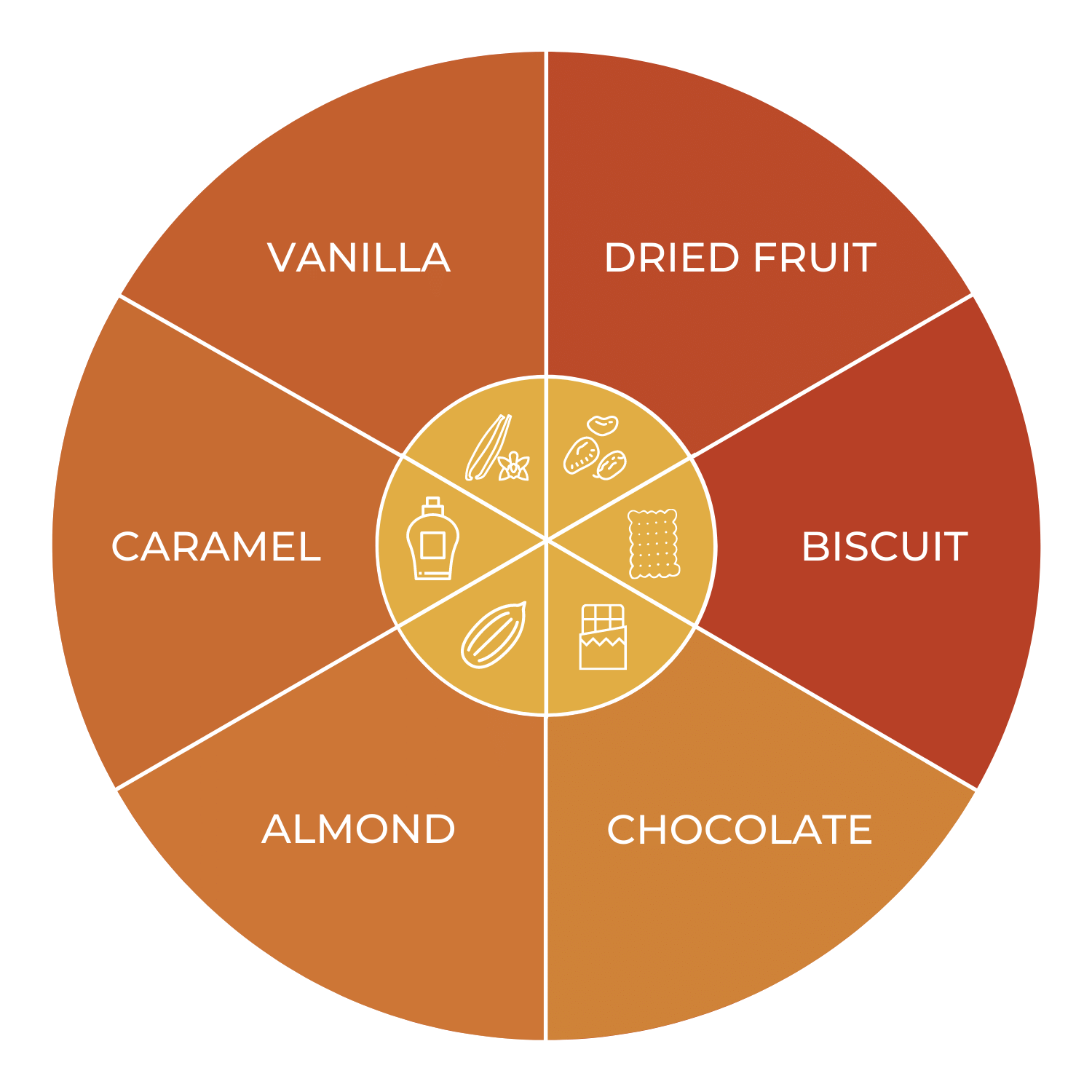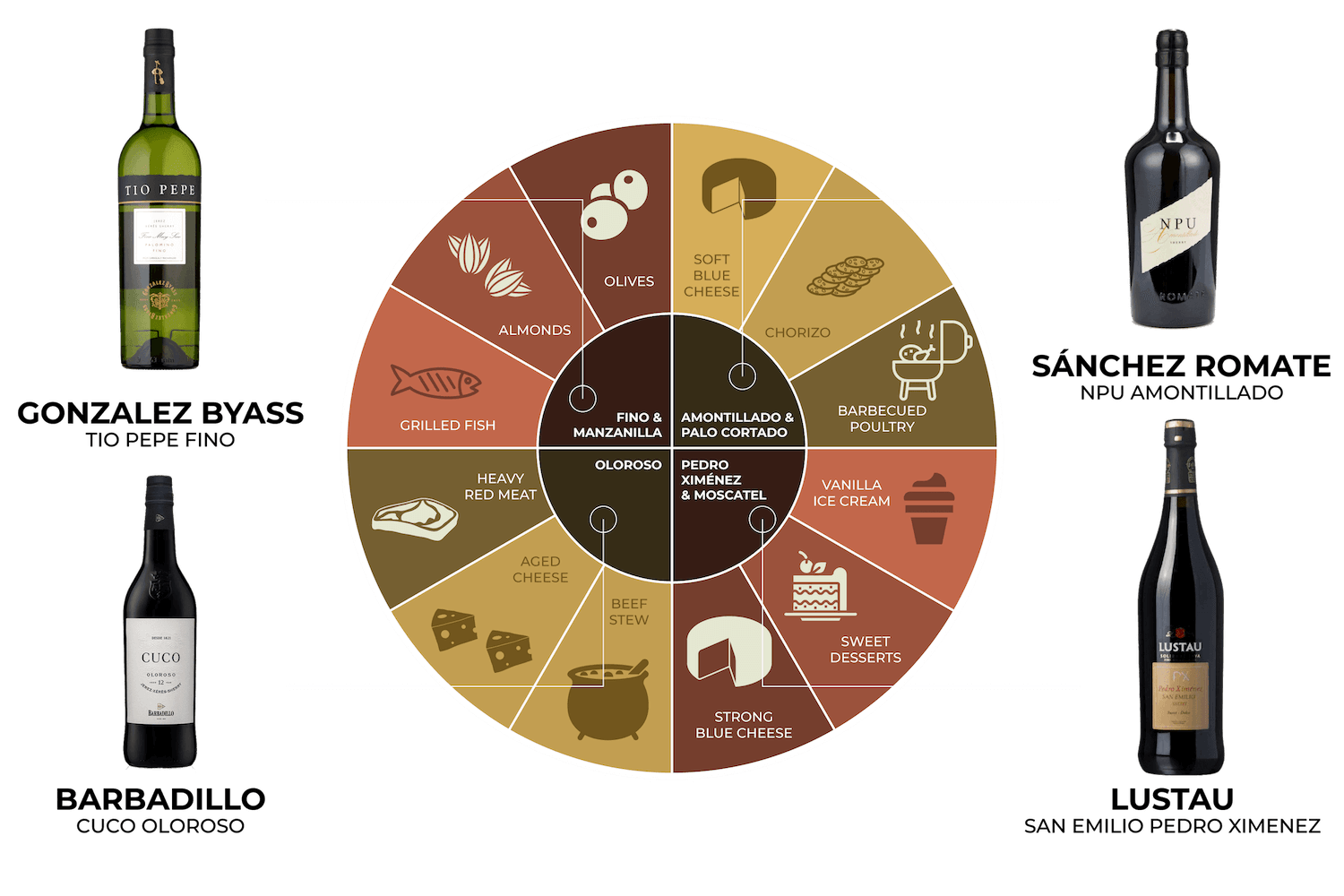Sherry is a type of fortified wine hailing exclusively from a select area in southern Spain, where it has been made for centuries.
Although many might be more familiar with the famous sweet dessert style examples of Sherry, it is mostly the case that you will find bottles that are made in a fresh and dry style, making this category of fortified wine one of the most interesting to explore.
Whatever style of wine you’re looking to find, whether it be sweet or dry, Sherry offers you perhaps the greatest amount of variety and opportunities for enjoyment.
To get a quick idea of how these wines taste and how they can be matched with food, see our quick guide below.
As mentioned previously, Sherry has been produced by winemakers in southern Spain for centuries, with some of the earliest known records of wine being produced in the area occurring during the times of the Phoenicians and Greeks in the 11th century BC.
Surviving the rise and fall of the Carthaginian, Roman, Moorish, and Spanish empires throughout the course of history, winemaking has continued to flourish in the area near to the major port city of Cádiz, where the production of Sherry has developed over time.
Sherry as it is called today is the Anglicanization of the term “Jerez”, which is itself derived from the name of the town from which the wines’ production is mostly focused, Jerez de la Frontera, commonly referred to as just “Jerez”.
To discover more on the historical development of Sherry, visit this site, which goes into great depth.
Bottles of Sherry are famous for being incredibly variable in their specific flavour profile depending upon the particular style being considered.
Explored in further detail below, Sherry is given a particular label or classification that alludes to the expected taste of the resulting wine, among other things.
That being said, Sherry is typically medium to full bodied in its character, with most examples of the wine being considered overwhelmingly dry and moderately acidic in their style, and exuding a very distinct nutty taste and aroma.
Whilst most are dry in their taste, some bottles can be incredibly rich and sweet, with strong aromas and tastes of dates, raisins, caramel, and even maple syrup, with these bottles often being the most expensive to purchase.
Today, Sherry is only produced by those wineries or bodegas existing within the protected regional denomination of Jerez-Xérès-Sherry, which encompasses a rather small area that includes the three major towns of Sanlúcar de Barrameda, El Puerto de Santa María, and Jerez de la Frontera, forming what is popularly known as the “Sherry triangle”.
Whilst the final wine product must be fermented, aged, blended, and bottled within this small triangular area, the grapes used to produce the wine are allowed to come from a much wider area that includes vineyards located further out from the main city of Jerez itself.
For more on how the region is defined and its history, consider this insightful article.
Bottles of Sherry are given unique labels and classifications depending upon the particular style that the producer wishes to make.
Starting from the driest style and moving up to the sweetest, they are fino, manzanilla, amontillado, palo cortado, oloroso, pedro ximénez, and moscatel.
Whilst this is generally the correct order of sweetest to driest, there are exceptions to the rule and it is possible to find variations in exact levels of sweetness even amongst those of the same style, making it important to check for specific tasting notes before sampling.
There are a number of best practices to follow when looking to pair a particular style of Sherry with food.
Whilst each of them will have specific food pairing recommendations to be ideally followed, any bottle of Sherry, sweet or dry, can almost always be served comfortably well alongside almost any kind of salty snack or finger food.
That being said, fino or manzanilla Sherrys are best matched with grilled fish, almonds, or olives, amontillado or palo cortado Sherrys alongside barbecued white or red meat, chorizo, or soft blue cheese, oloroso Sherries with any kind of heavy red meat dish, aged cheese, or beef stew, and finally, pedro ximénez or muscatal Sherry should be paired with strong blue cheese, sweet desserts, or poured over ice cream.
There's a bottle of Sherry out there for everyone. Here are some of the brands and bottles that we recommend you look out for the next time you're browsing online or in-store.
Sherry is a complicated & often misunderstood drink. Here we explore all of the ways that it can be enjoyed & how you can pick the right bottle & type for you.
Ever wanted to know what wines to pick when looking for something sweet? We help you satisfy your craving for something sweet when browsing in a bottle shop or bar.
Curious about Liqueur Muscats? In our illustrated guide for beginners, we uncover what makes them so special, including how they taste & match with food.



